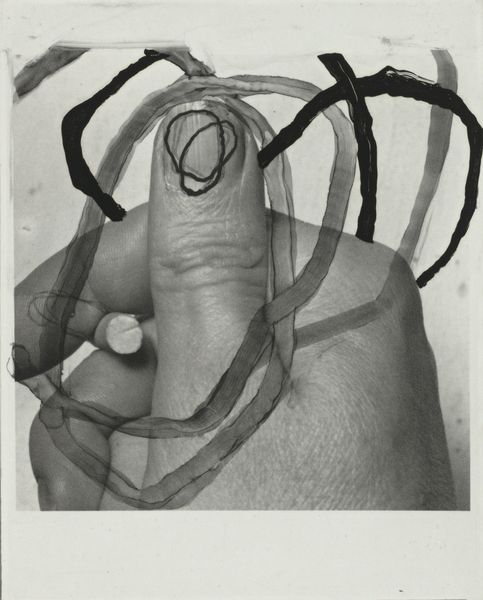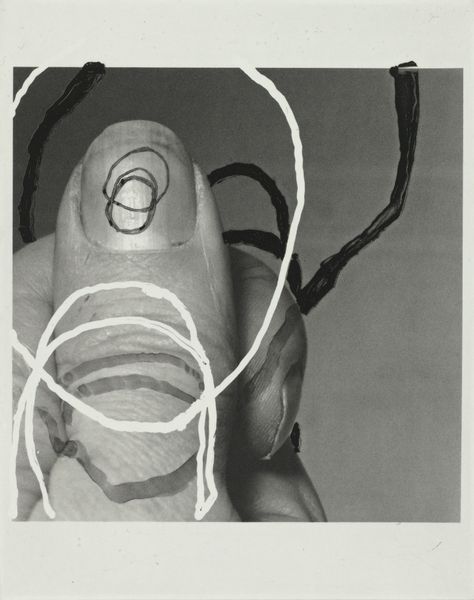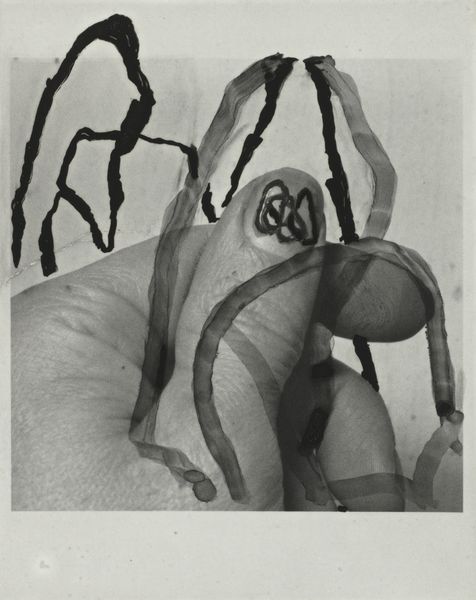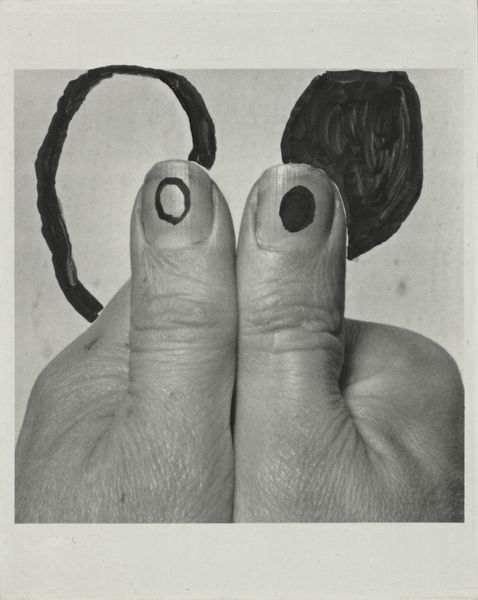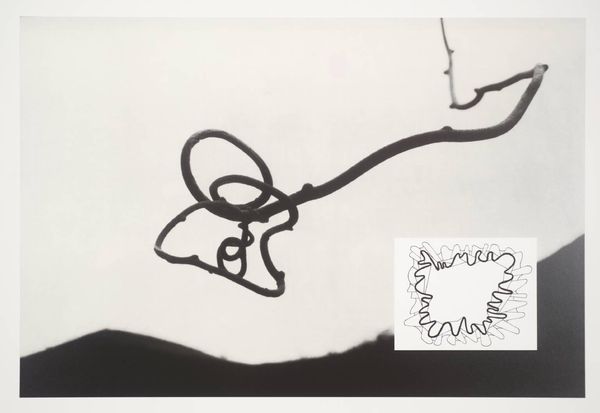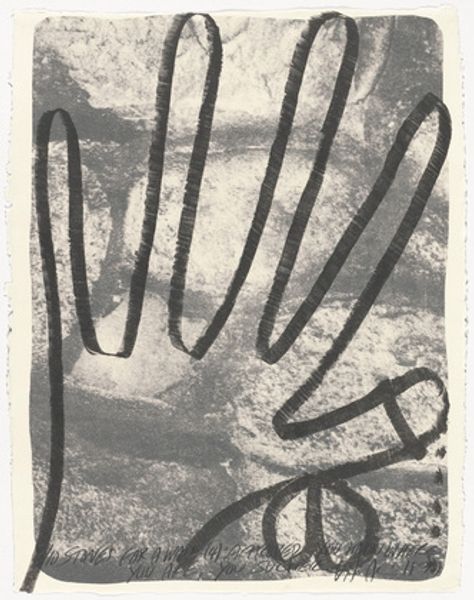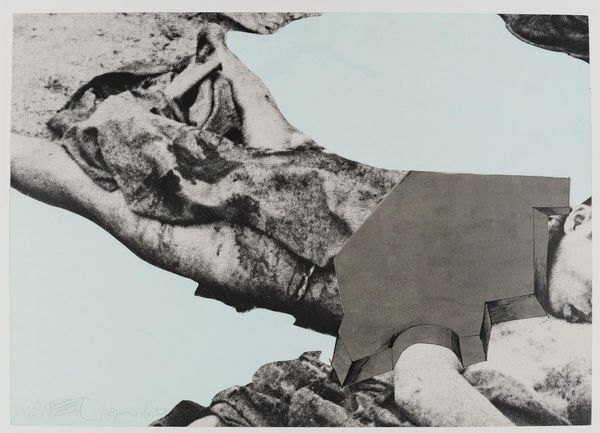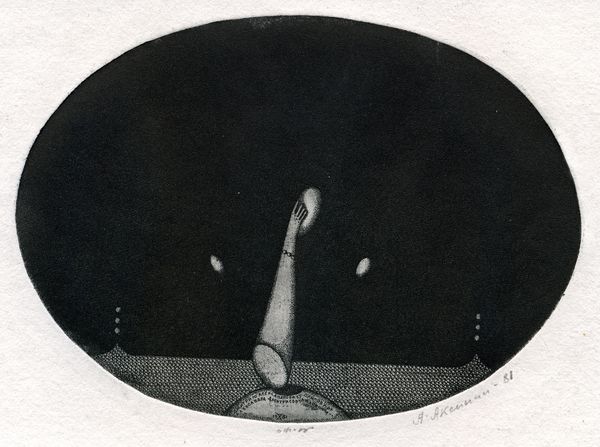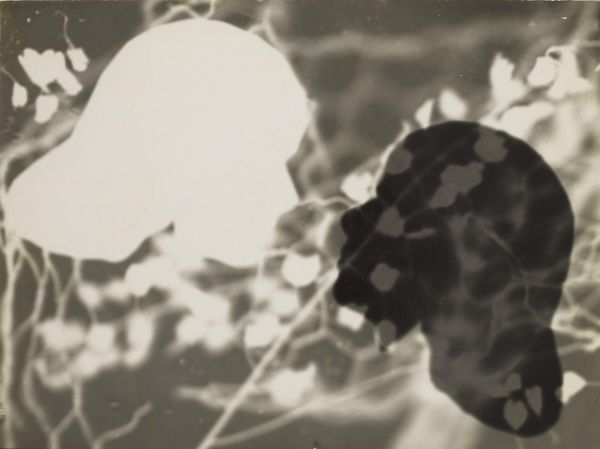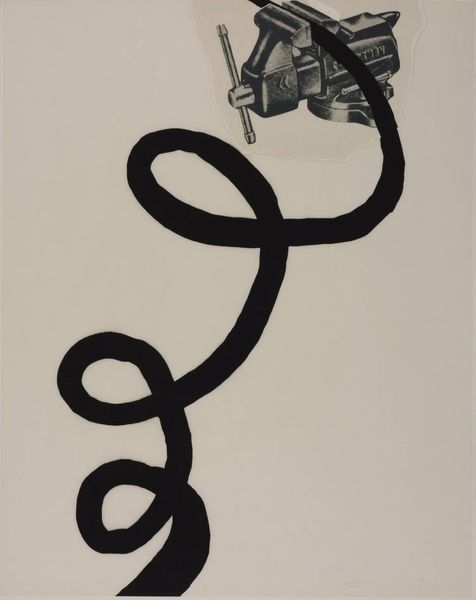
print, photography, gelatin-silver-print
#
portrait
# print
#
photography
#
geometric
#
gelatin-silver-print
#
abstraction
#
line
#
modernism
Dimensions: image: 25 × 20 cm (9 13/16 × 7 7/8 in.) sheet: 31.6 × 24.2 cm (12 7/16 × 9 1/2 in.)
Copyright: National Gallery of Art: CC0 1.0
Editor: So, here we have Al Taylor’s "D. (All Thumbs)," a gelatin-silver print from 1997. The composition, the focus on a single thumb, is rather peculiar, especially given all the lines he's drawn on it, some kind of network. How do you interpret this work? Curator: What strikes me is the interplay between the photographic image and the added graphic elements. The process is key. Taylor isn’t just presenting a picture; he's actively intervening in its materiality, layering mark-making onto the photographic surface. How does this manipulation alter the original context and meaning of the image itself? Editor: It seems to be breaking down traditional art categories. It’s photography but also drawing, right? A collapsing of media. Curator: Exactly! Think about the traditional separation between high art, like painting or sculpture, and supposedly ‘lesser’ crafts. By combining photography, a relatively reproducible medium, with hand-drawn elements, Taylor is challenging that hierarchy. Consider the act of drawing directly on a photographic print. What kind of labor and deliberate act is the artist emphasizing? Editor: It’s interesting to think of labor being present within a photograph in this way, because traditionally the value we place on it seems so focused on composition and the skill of capturing a fleeting moment. The handmade interventions shift our focus. Curator: Precisely! It makes you question what constitutes “value” in art. Is it the captured image, or the process of intervention? What relationship does this piece create between consumption and production? The use of a gelatin-silver print—its historical association with documentation—further complicates this interplay. Editor: So by drawing on the photograph, the artist isn’t simply defacing it but highlighting its nature as a material object altered through the process. It subverts how we consume photos. I guess it's hard not to appreciate that it shows an immediate way of creating that changes the final output. Curator: And consider the scale. Is it inviting scrutiny, a closer examination of its construction? The interplay of media pushes boundaries in exciting ways! Editor: I'll definitely be more aware of artistic process now! Thanks for your expertise!
Comments
No comments
Be the first to comment and join the conversation on the ultimate creative platform.

